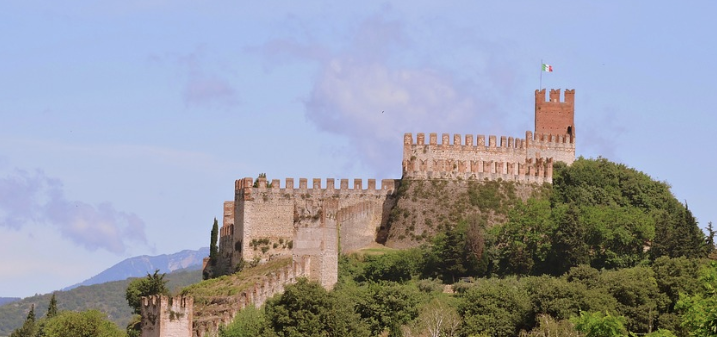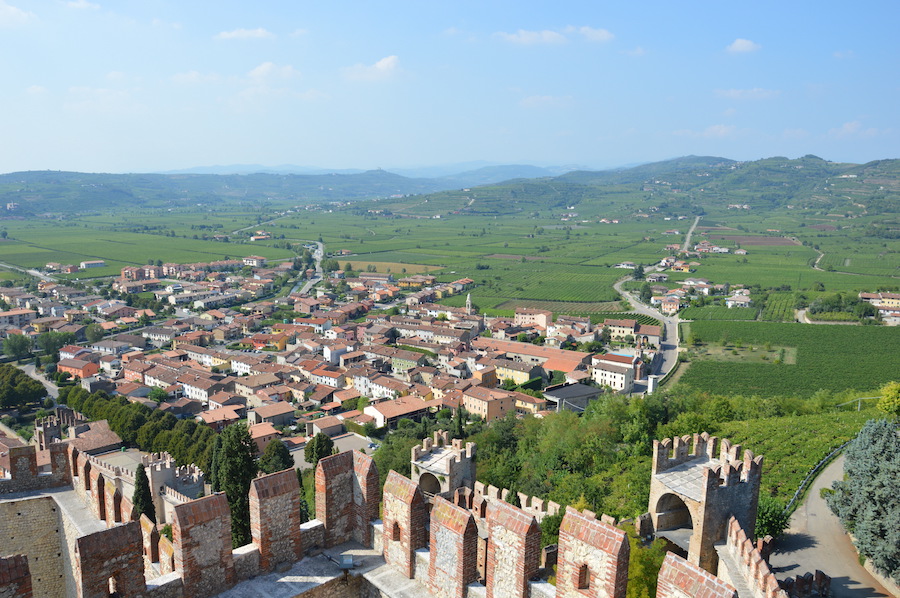
Soave

Pleasing, sweet, exquisite: this is what the word “soave” signifies in Italian. However, “Soave” means a lot more!
The town is principally famous, in addition to its homonymous wine, for its medieval castle, probably one of the best examples of castle architecture in the whole region.
There is no official document showing the origins of this monumental fortification, however it probably dates back to the early Xth century, on a site where Roman remains have been found. The counts of San Bonifacio were the first feudatories to own this stronghold, which was then conquered by the Scaligeri at the end of the XIIIth century. In 1375, Cansignorio della Scala decided to strenghten it, adding the impressive boundary walls that still today enclose the whole village, giving it a unique “olde worlde” atmosphere. Nowadays, you can visit the castle — with its drawbridge, high central tower, courtyards and frescoed salons, while its keep and the boundary walls offer one of the most beautiful panoramas of the Lessini mountains and the Po valley, as well as of the seemingly endless fields full of vineyards that surround this incredible place.
Soave is one of the most renowned wines in Italy and abroad, it can be dry and still, slightly sparkling or, in its Recioto version, even sweet. The Soave DOC (guarantee of origin) includes various wines produced in this area, placed on the hills between the provinces of Verona and Vicenza, such as Soave Classico DOC, DOC Colli Scaligeri, Superiore DOCG and Recioto di Soave DOCG. The oldest production site is on the hills of Soave and Monteforte d’Alpone, which is where Classico DOC comes from; the hills between San Martino Buon Albergo up to Roncà give life to DOC Colli Scaligeri; the flat areas of the valleys represent a third wine production site. The vineyard area is 6,500 total hectares.
According to the procedural guidelines, Soave DOC has to consist of at least 70% of its core grape — local Garganega with its fairly big bunch, hard, golden-skinned grapes and high output — while the remaining 30% can include Trebbiano di Soave, Pinot Bianco and Chardonnay grapes. However, winemakers’ prevailing tendency is to use Garganega in its purity, as it is a grape that adds all those characteristic mineral fragrances coming from the volcanic hills it grows upon. Soave wines tend to be light to medium bodied, light enough to enjoy on their own or with some nibbles: maybe this is why you will find it is one of our go-to wines for aperitivo!
Join one of our dedicated wine tours to explore this magical land with its history and to discover all of its secrets!




